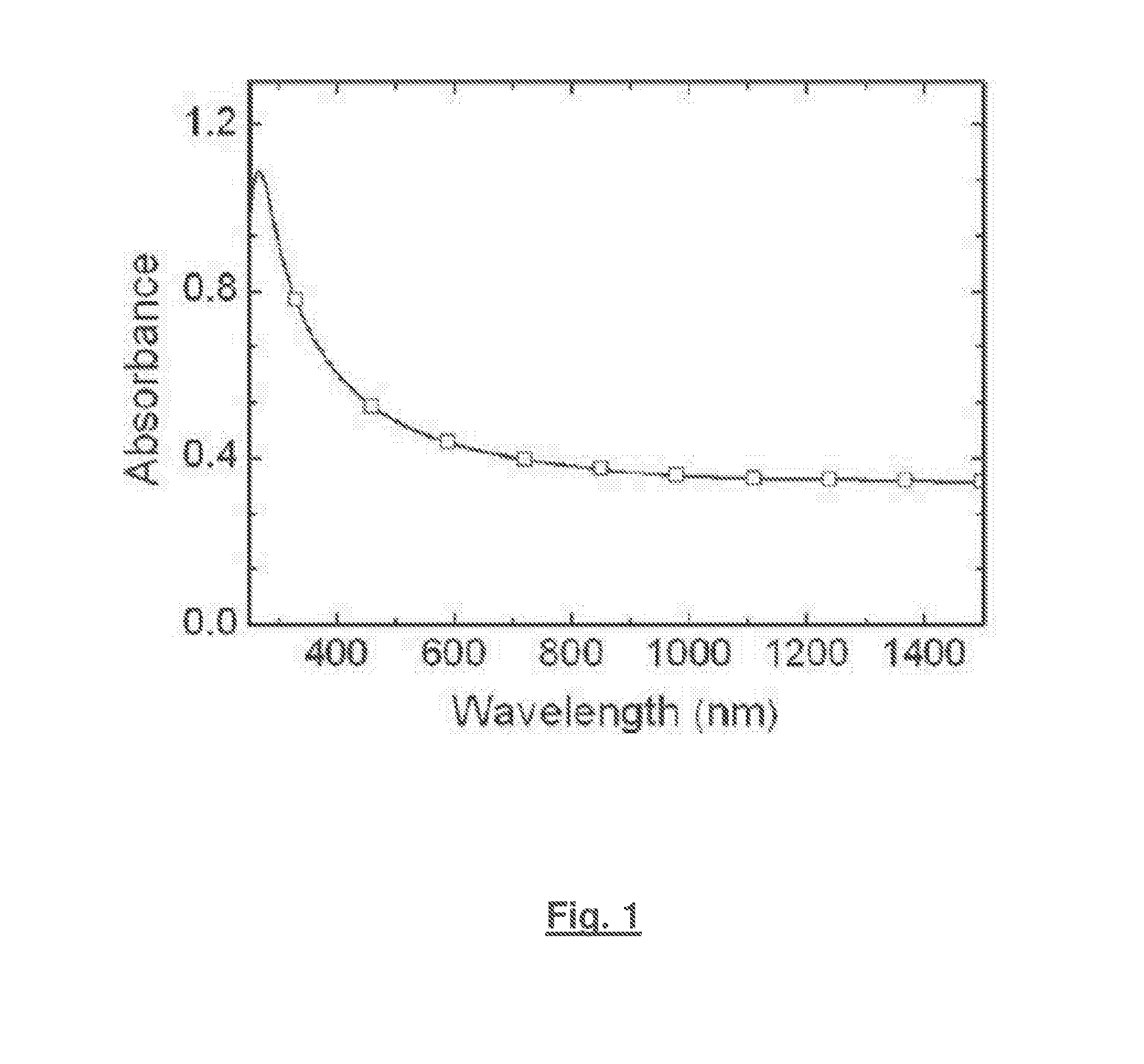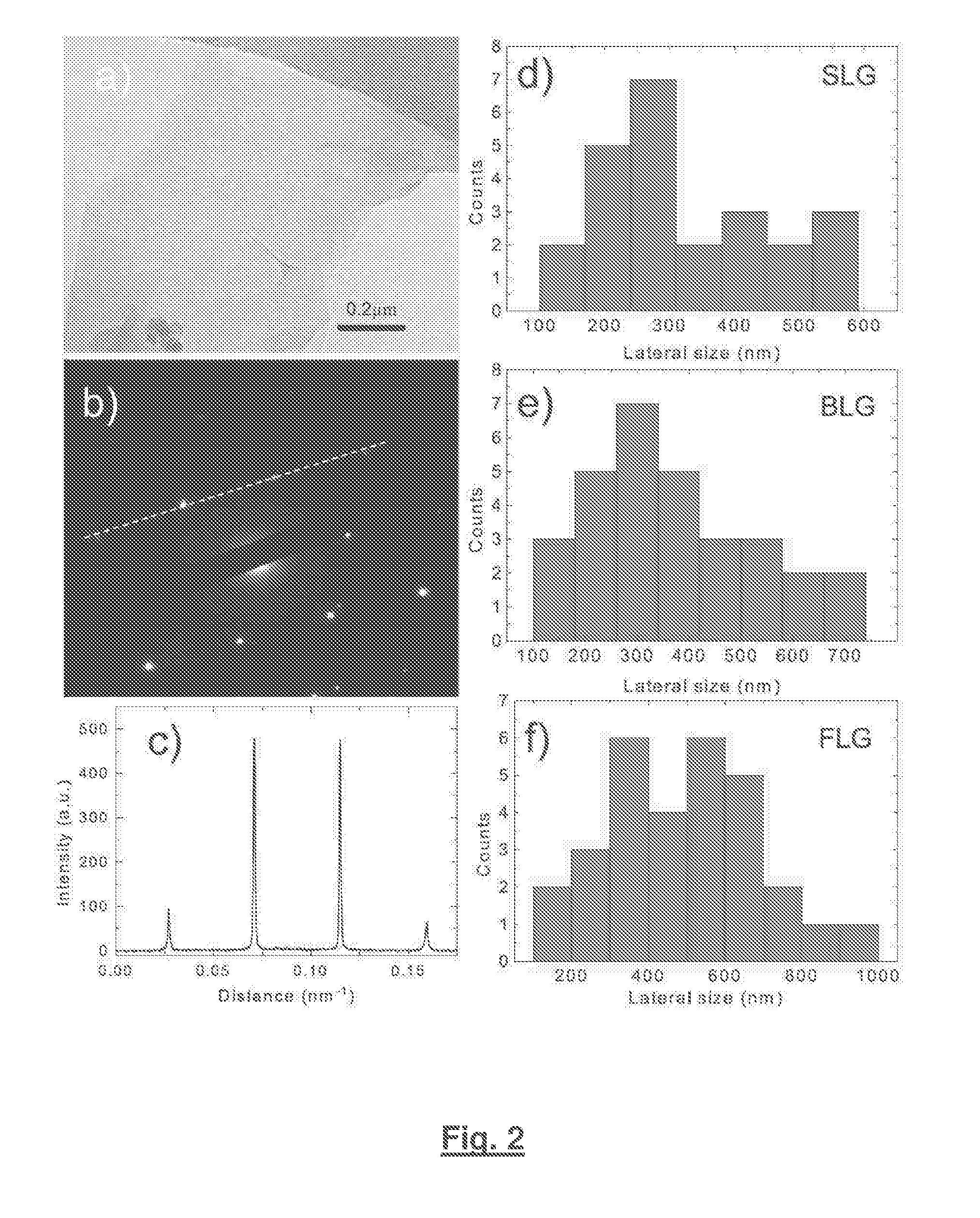Functional Inks Based on Layered Materials and Printed Layered Materials
a technology of functional inks and printed layers, applied in the field of functional inks based on layered materials, can solve the problems of unsatisfactory prior art disclosures of the manufacture of printable conductive inks, unreliable use of printed layers, and inability to disclose optical characteristics of printed films, so as to avoid clogging of nozzles
- Summary
- Abstract
- Description
- Claims
- Application Information
AI Technical Summary
Benefits of technology
Problems solved by technology
Method used
Image
Examples
example2
: viscosity 1.9 mPa s, density 1.05 g / cm3, surface energy 40 mJ / m2 [0246] viscosity 4.2 mPa s, density 1.05 g / cm3, surface energy 42 mJ / m2 [0247]Example3: viscosity 18 mPa s, density 1.05 g / cm3, surface energy 46 mJ / m2
[0248]The obtained graphene-ink is characterized by Optical Absorption Spectroscopy, Transmission Electron Microscopy and Raman Spectroscopy, as discussed above.
[0249]For printing on Si / SiO2, the target substrate is immersed in acetone and ultrasonicated (Bath sonicator, 20 W) for 5 minutes followed by a further ultrasonication in Isopropyl Alcohol (IPA) for 2 minutes. After ultrasonication, a nitrogen flux (100 sccm) cleans the substrate from residual IPA. A layer of Hexamethyldisilazane (HMDS) is spin coated on the target substrate at 1000 rpm for 40 seconds at 21° C. The target substrate is annealed on hot plate for 5 mins at 80° C.
[0250]For the case of heat-treated polyethylene terephthalate with antistatic coating (PMX715, hifi industrial film) as the target subs...
PUM
| Property | Measurement | Unit |
|---|---|---|
| area | aaaaa | aaaaa |
| surface energy | aaaaa | aaaaa |
| viscosity | aaaaa | aaaaa |
Abstract
Description
Claims
Application Information
 Login to View More
Login to View More - R&D
- Intellectual Property
- Life Sciences
- Materials
- Tech Scout
- Unparalleled Data Quality
- Higher Quality Content
- 60% Fewer Hallucinations
Browse by: Latest US Patents, China's latest patents, Technical Efficacy Thesaurus, Application Domain, Technology Topic, Popular Technical Reports.
© 2025 PatSnap. All rights reserved.Legal|Privacy policy|Modern Slavery Act Transparency Statement|Sitemap|About US| Contact US: help@patsnap.com



